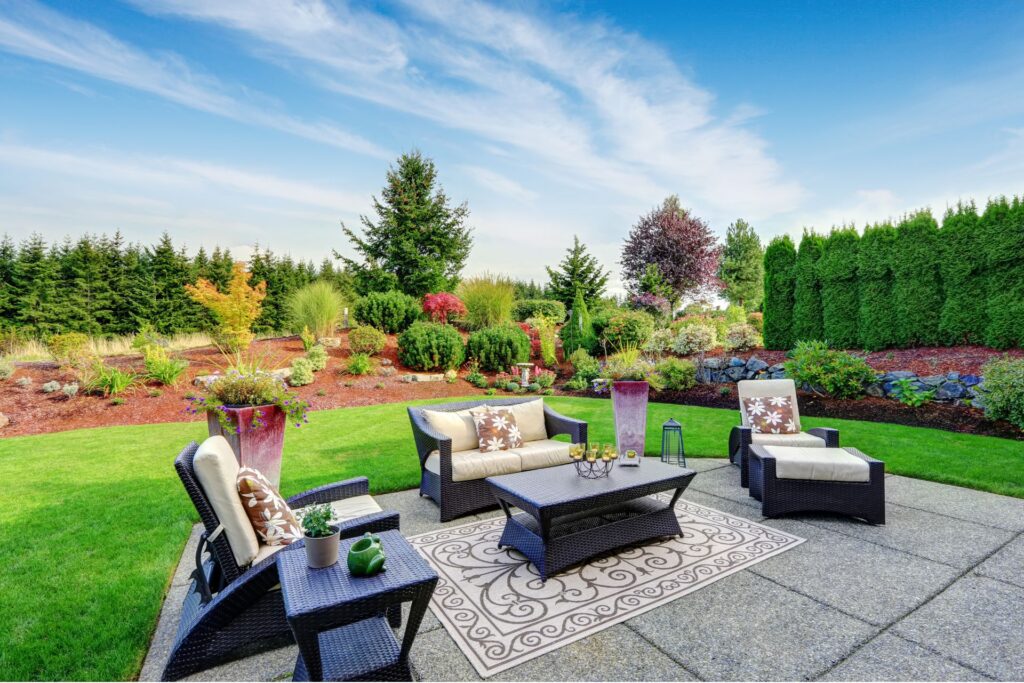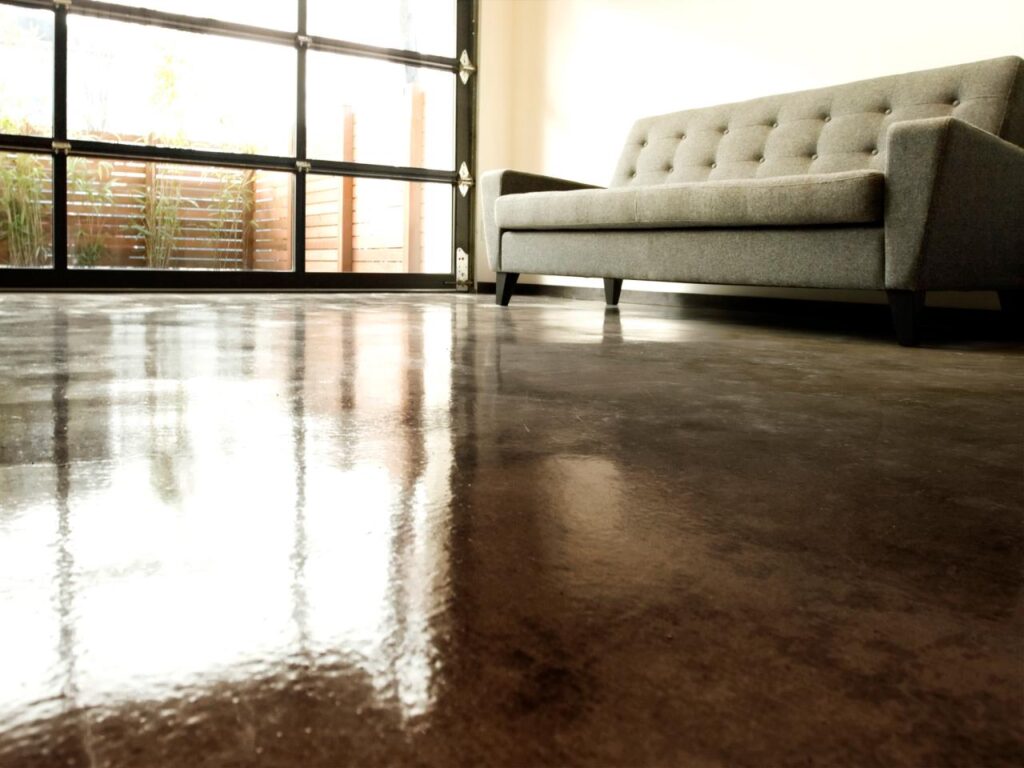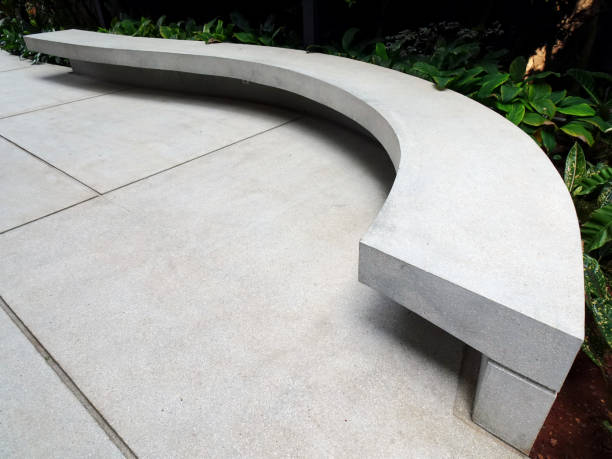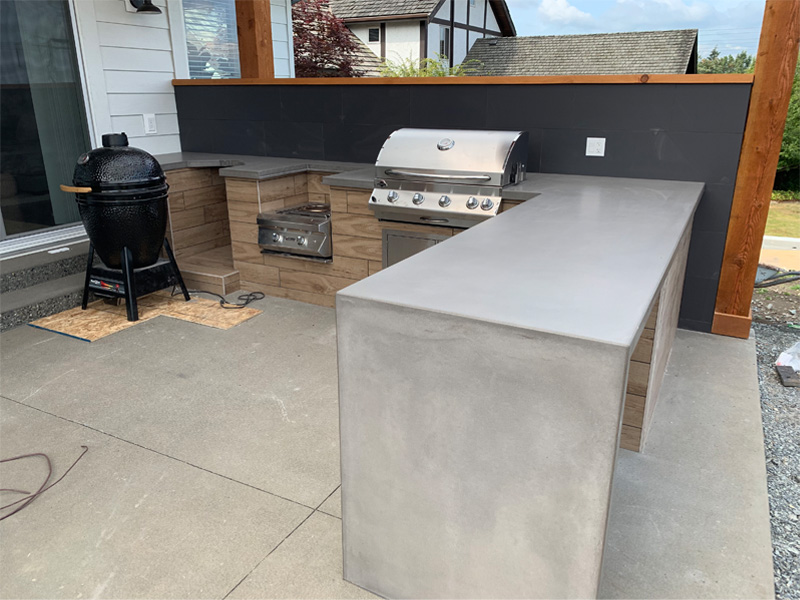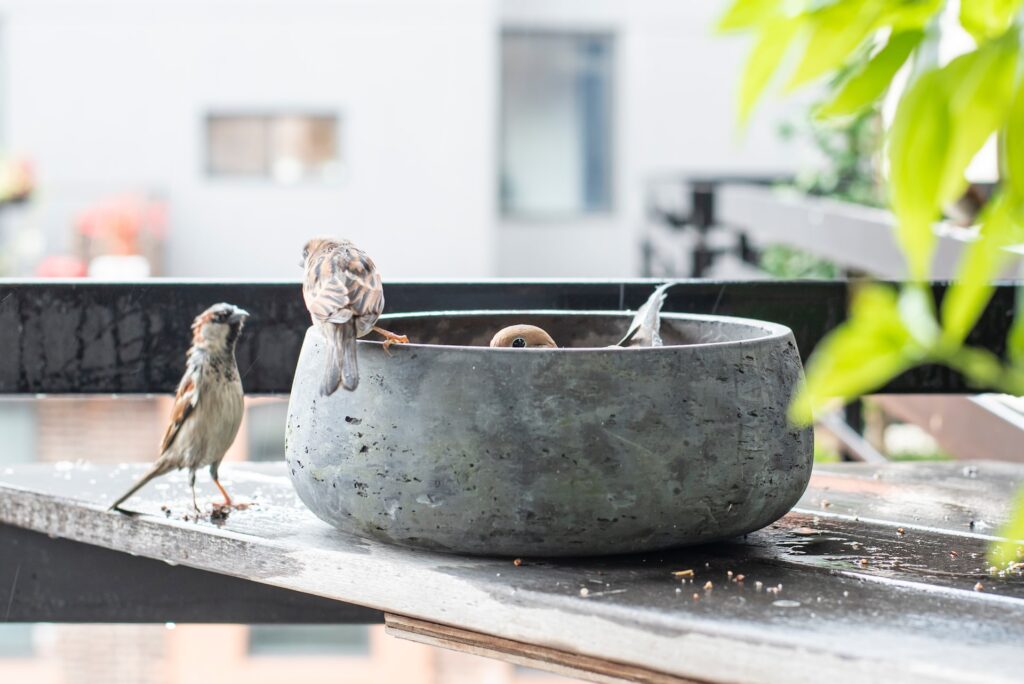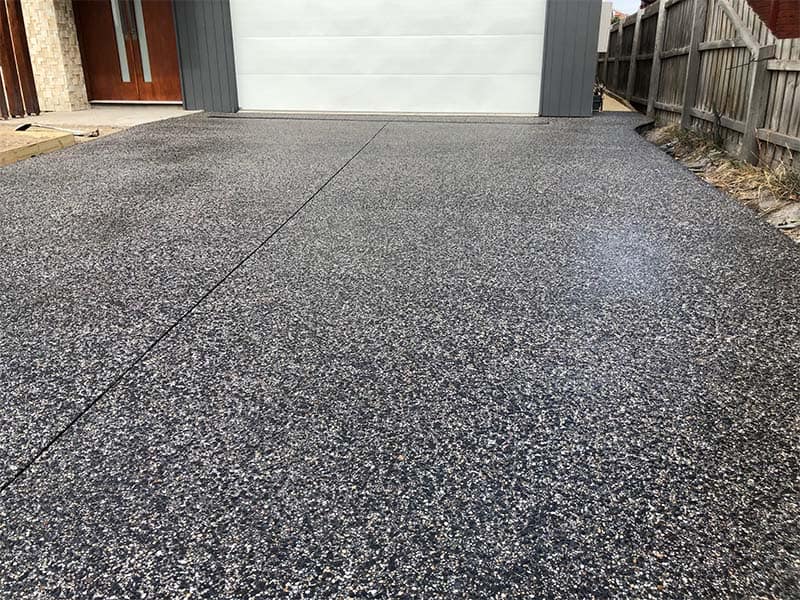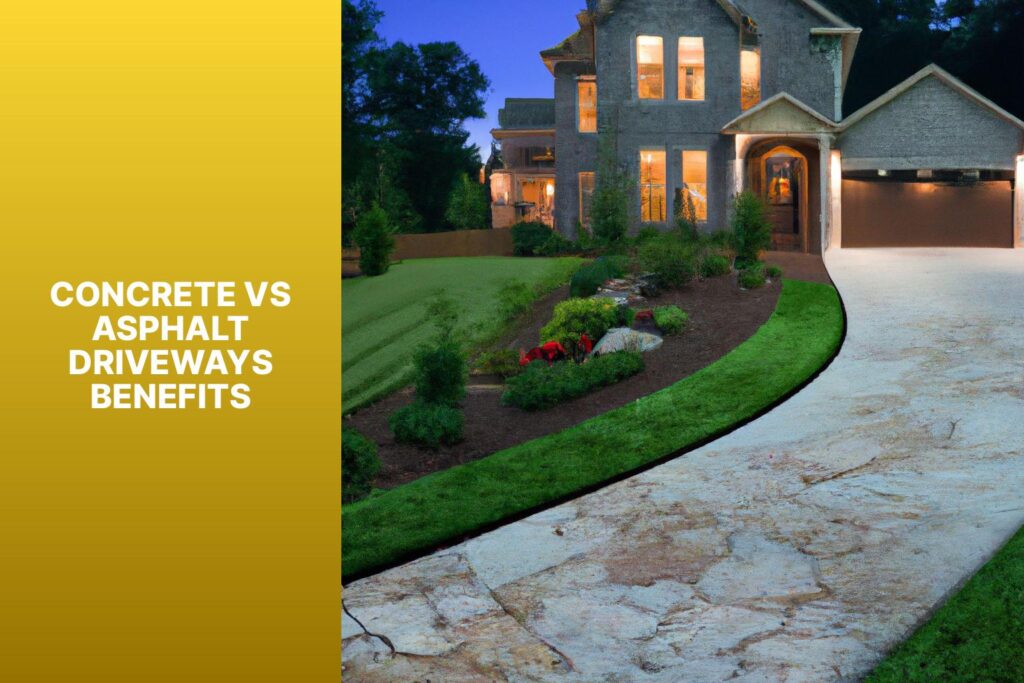Welcome to the ultimate guide on deciding whether to paint or seal your concrete patio. Choosing between painting and sealing can significantly impact the durability, appearance, and maintenance of your outdoor space. As a homeowner, you’re faced with the challenge of balancing aesthetics with practical considerations like weather resistance and long-term upkeep. In this comprehensive blog post, we’ll explore the benefits and considerations of both options, helping you make an informed decision that suits your lifestyle and enhances the beauty of your patio. Whether you’re aiming for a vibrant, colored surface or prefer to preserve the natural look of concrete, we’ve got you covered with expert advice and practical insights.
Choosing between painting or sealing your concrete patio depends on your priorities. Painting offers a wide range of colors and protects against elements like UV rays and moisture but requires periodic maintenance. Sealing preserves the natural look of concrete while enhancing durability against stains and weather damage, with less frequent upkeep needed. Consider your aesthetic preferences, maintenance commitment, and climate to make the right choice for a patio that looks great and lasts.
- Understanding Your Concrete Patio
- Painting Your Concrete Patio
- Sealing Your Concrete Patio
- Factors To Consider Before Making A Choice
- Case Studies And Examples
- FAQs: About Should I Paint or Seal My Concrete Patio
- What are the main differences between painting and sealing a concrete patio?
- How does painting affect the appearance of my concrete patio?
- What are the advantages of sealing my concrete patio?
- Will painting or sealing my concrete patio affect maintenance requirements?
- How does climate affect the choice between painting and sealing?
- Can I change the color of a painted concrete patio in the future?
- Which option is more cost-effective in the long run?
- How do I prepare my concrete patio for painting or sealing?
- Can I DIY paint or seal my concrete patio, or should I hire a professional?
- What factors should I consider when deciding between painting and sealing my concrete patio?
- Conclusion
Understanding Your Concrete Patio
Characteristics of Concrete Patios
Concrete patios are a popular choice for outdoor spaces due to their versatility and durability. They can be designed to fit any aesthetic, from sleek modern looks to rustic charm. One of the standout characteristics of concrete patios is their long-lasting nature. When properly installed and maintained, a concrete patio can serve as a functional and beautiful outdoor area for many years.
However, like any material, concrete has its own set of challenges. One common issue is its susceptibility to weathering. Over time, exposure to the elements—rain, sun, and temperature fluctuations—can cause the concrete to expand and contract, leading to cracks. These cracks can start small but may grow if not addressed promptly, compromising the integrity and appearance of the patio.
Another common problem is staining. Concrete is porous, meaning it can absorb liquids and be prone to discoloration from spills, leaves, and dirt. Regular cleaning and sealing can help mitigate this issue, keeping the patio looking fresh and clean.
Benefits of Maintaining a Concrete Patio
Maintaining your concrete patio is essential for prolonging its lifespan and preserving its appearance. Regular maintenance tasks include cleaning, sealing, and addressing any minor repairs before they become significant problems.
Cleaning: Keeping your concrete patio clean prevents the buildup of dirt, mold, and mildew, which can cause staining and make the surface slippery. A simple routine of sweeping and washing with mild detergent and water can go a long way.
Sealing: Applying a sealant to your concrete patio creates a protective barrier against moisture and stains. Sealants can enhance the patio’s resistance to weathering and reduce the risk of cracks and other damage. It’s recommended to reseal your patio every few years, depending on the level of use and exposure to elements.
Repairs: Addressing cracks and chips early can prevent them from becoming larger issues. Using a concrete patching compound for small repairs can maintain the structural integrity and look of your patio.
By investing a little time and effort into regular maintenance, you can enjoy a beautiful, durable concrete patio for many years. Proper upkeep not only enhances the patio’s appearance but also ensures it remains a safe and enjoyable space for outdoor activities.
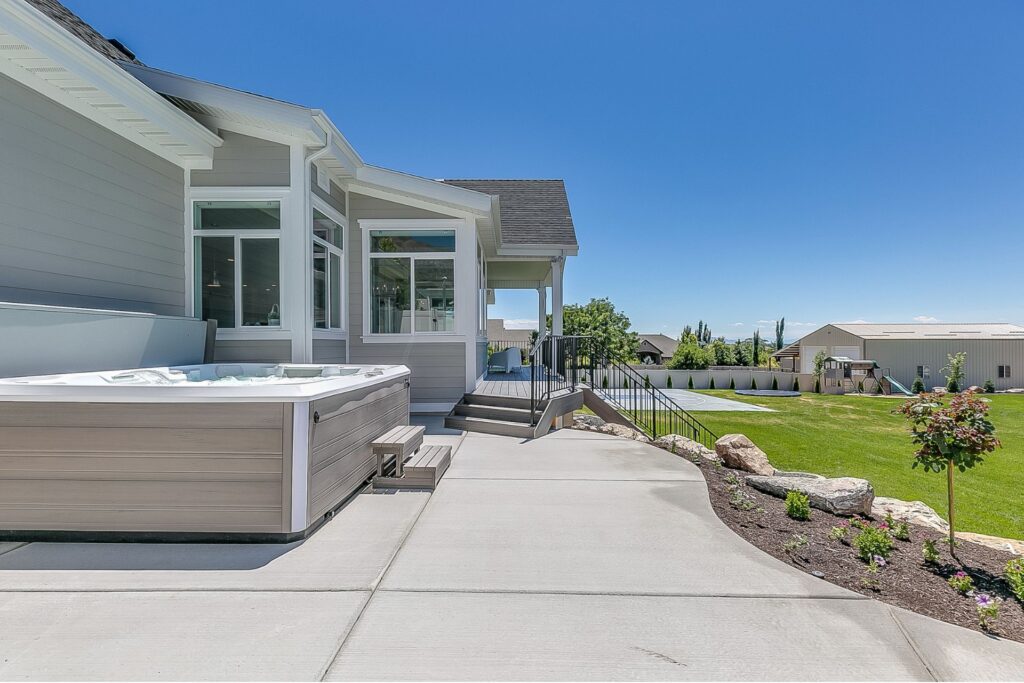
Painting Your Concrete Patio
Benefits of Painting
Painting your concrete patio offers numerous advantages that go beyond simple aesthetics. Here’s a closer look at why you might want to consider this upgrade:
Enhances Aesthetic Appeal: One of the most compelling reasons to paint your concrete patio is the transformative effect it can have on your outdoor space. With a vast range of color options available, you can choose hues that complement your home’s exterior, blend seamlessly with your landscaping, or make a bold statement. Whether you prefer neutral tones or vibrant shades, painting can turn a dull, gray patio into a stunning focal point.
Protective Layer: Beyond beauty, painting your concrete patio provides a functional benefit by adding a protective layer. This layer helps shield the concrete from harsh elements like UV rays, which can cause fading and degradation over time. It also offers a barrier against moisture, reducing the risk of cracks, erosion, and mold growth. In areas with extreme weather conditions, this protection can significantly extend the life of your patio.
Considerations
Before you embark on painting your concrete patio, there are several important factors to consider to ensure a successful and lasting finish.
Preparation Steps: Proper preparation is crucial for achieving a durable and attractive paint job. Start by thoroughly cleaning the concrete surface to remove dirt, grime, and any existing paint. This can be done using a pressure washer or a scrub brush with a suitable cleaning solution. Next, inspect the patio for any cracks or imperfections and repair them with a concrete patching compound. Once the surface is clean and smooth, apply a primer designed for concrete. Priming is essential as it helps the paint adhere better and ensures a more even finish.
Long-Term Maintenance: Painted patios require regular maintenance to keep them looking their best. Over time, exposure to the elements and foot traffic can cause the paint to wear down. Plan for periodic touch-ups to address any chips or fading areas. Additionally, depending on the paint type and environmental conditions, you may need to repaint the entire patio every few years to maintain its fresh appearance and protective qualities.
Potential Drawbacks: While painting offers many benefits, it’s important to be aware of potential downsides. One common issue is peeling or chipping, especially if the surface was not properly prepared or if inferior paint products were used. High-traffic areas are particularly susceptible to this problem. Another consideration is the difficulty of changing colors once the patio is painted. Unlike other surfaces, removing paint from concrete can be a challenging and time-consuming process. Therefore, it’s advisable to choose your color carefully and consider the long-term implications of your choice.
In conclusion, painting your concrete patio can be a great way to enhance its appearance and protect it from the elements. By understanding the benefits, preparation steps, and potential challenges, you can make an informed decision and enjoy a beautiful, long-lasting finish.
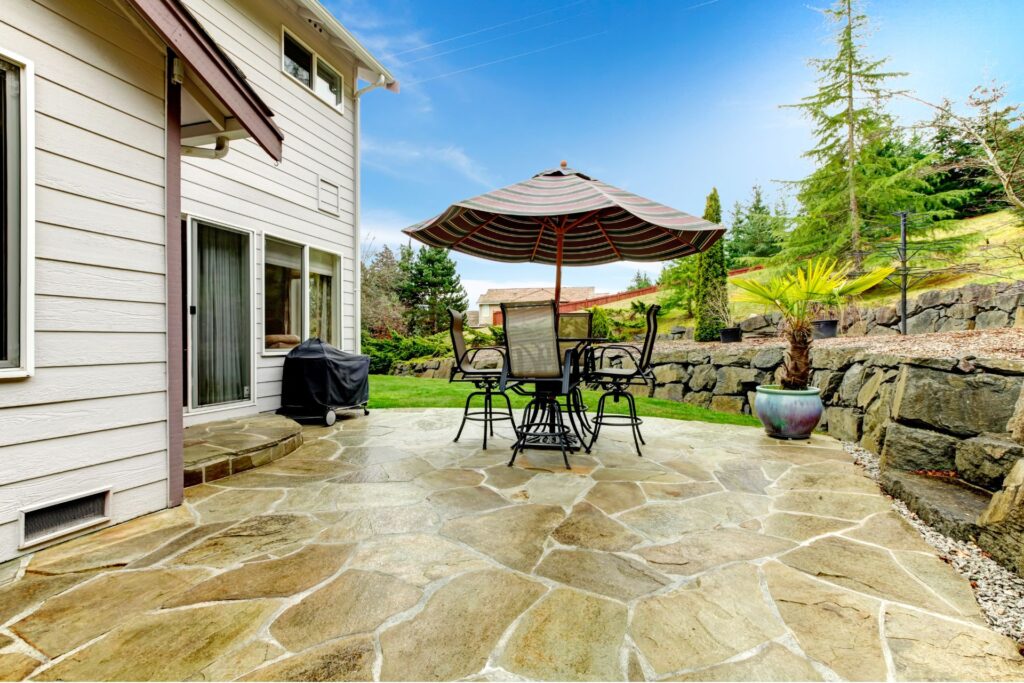
Sealing Your Concrete Patio
Benefits of Sealing
Sealing your concrete patio is an essential step to preserve its natural beauty and ensure its longevity. One of the primary benefits of sealing is that it maintains the concrete’s original look while significantly enhancing its durability. By applying a high-quality sealer, you can protect your patio from common issues such as stains, moisture penetration, and freeze-thaw damage.
Stains from food, beverages, and other substances can easily mar the appearance of an unsealed concrete patio. A sealer creates a protective barrier that prevents these substances from penetrating the surface, making clean-up much easier and keeping your patio looking fresh and appealing. Additionally, sealing helps to prevent moisture from seeping into the concrete. Moisture penetration can lead to a range of problems, including mold growth, cracking, and structural weakening, especially in regions with freeze-thaw cycles where water can freeze and expand within the concrete, causing it to crack. By sealing your patio, you effectively shield it from these damaging effects, ensuring it remains in great condition for years to come.
Considerations
When it comes to sealing your concrete patio, there are several important considerations to keep in mind to achieve the best results.
Types of Sealers
First, you need to choose the right type of sealer. There are two main categories: penetrating sealers and topical sealers. Penetrating sealers, as the name suggests, penetrate deep into the concrete, forming a chemical barrier that protects against moisture and stains from within. These sealers are excellent for maintaining the natural look of the concrete and providing long-lasting protection. On the other hand, topical sealers sit on the surface of the concrete, creating a protective film. They can enhance the appearance by adding a glossy finish or color tint and offer good protection against stains and wear. However, they may require more frequent reapplication compared to penetrating sealers.
Application Process
The application process is another critical aspect to consider. Proper preparation of the concrete surface is essential for effective sealing. Start by thoroughly cleaning the patio to remove any dirt, debris, or existing stains. This might involve using a pressure washer or specialized cleaning solutions. Once the surface is clean, allow it to dry completely before applying the sealer. Applying the sealer on a damp surface can reduce its effectiveness.
When it comes to applying the sealer, follow the manufacturer’s instructions carefully. Typically, you will use a roller or sprayer to apply an even coat of sealer over the entire patio. It’s important to work in sections and avoid over-application, as this can lead to uneven drying and a patchy appearance. After applying the sealer, allow it to dry according to the recommended time before using the patio.
Maintenance
Maintenance is key to ensuring the long-term benefits of sealing. Over time, the sealer can wear down due to exposure to the elements and foot traffic. Regularly inspect your patio for signs of wear and reapply the sealer as needed. The reapplication interval can vary depending on the type of sealer used and the level of use the patio receives. Typically, penetrating sealers may need to be reapplied every 5-10 years, while topical sealers might require reapplication every 1-3 years.
In addition to resealing, keep your patio clean and free from debris. Sweep regularly and promptly clean up any spills to prevent stains from forming. By staying on top of maintenance, you can ensure that your concrete patio remains protected and looks its best for many years.
In conclusion, sealing your concrete patio is a wise investment that enhances its appearance, durability, and resistance to common issues like stains and moisture damage. By choosing the right sealer, following a proper application process, and maintaining it regularly, you can enjoy a beautiful and long-lasting outdoor space.

Factors To Consider Before Making A Choice
When it comes to deciding between various construction and renovation options, there are several crucial factors to consider to ensure you make the best choice for your specific needs. Here’s a detailed look at the key aspects you should evaluate:
Climate and Environmental Factors
The climate and environmental conditions of your location play a significant role in determining the durability and maintenance requirements of your chosen materials. For instance, if you live in an area with extreme weather conditions, such as heavy rainfall, intense sunlight, or freezing temperatures, you need to select materials that can withstand these elements without deteriorating quickly. For example, in areas with high humidity, certain materials may be prone to mold or mildew, necessitating more frequent maintenance. Understanding how the local climate affects different materials will help you choose one that remains durable and low-maintenance over time.
Desired Aesthetic
Your personal taste and the overall aesthetic you wish to achieve are also crucial considerations. Do you prefer the look of a colored surface that can be customized to match your home’s design, or do you favor the natural appearance of materials like concrete? The aesthetic choice can significantly impact the overall appeal and value of your property. Think about how the material will blend with your existing décor, landscaping, and architectural style. Additionally, consider whether the material can be easily modified or updated if your design preferences change in the future.
Budget Considerations
Budget is always a key factor in any construction or renovation project. It’s essential to look beyond the initial upfront costs and consider the long-term expenses associated with maintenance and repairs. While some materials may be cheaper initially, they could incur higher costs over time due to frequent maintenance or replacement needs. On the other hand, investing in higher-quality materials might mean less maintenance and longer-lasting durability, ultimately saving you money in the long run. Carefully evaluate your budget to ensure you can afford both the initial investment and the ongoing upkeep.
Time and Effort
The time and effort required for maintenance and periodic upkeep are other important factors to consider. Some materials demand more frequent cleaning, sealing, or repairs, which can be time-consuming and labor-intensive. If you have a busy lifestyle or prefer a low-maintenance option, you should choose materials that require minimal upkeep. This not only saves you time but also ensures that your property remains in excellent condition with less effort on your part. Consider your willingness and ability to commit to the necessary maintenance routines when making your choice.
By carefully considering these factors—climate and environmental conditions, desired aesthetics, budget considerations, and the time and effort required for maintenance—you can make an informed decision that best suits your needs and ensures long-term satisfaction with your project. Each of these aspects plays a vital role in the performance, appearance, and cost-effectiveness of your chosen materials, helping you achieve a successful and enduring outcome for your construction or renovation endeavors.
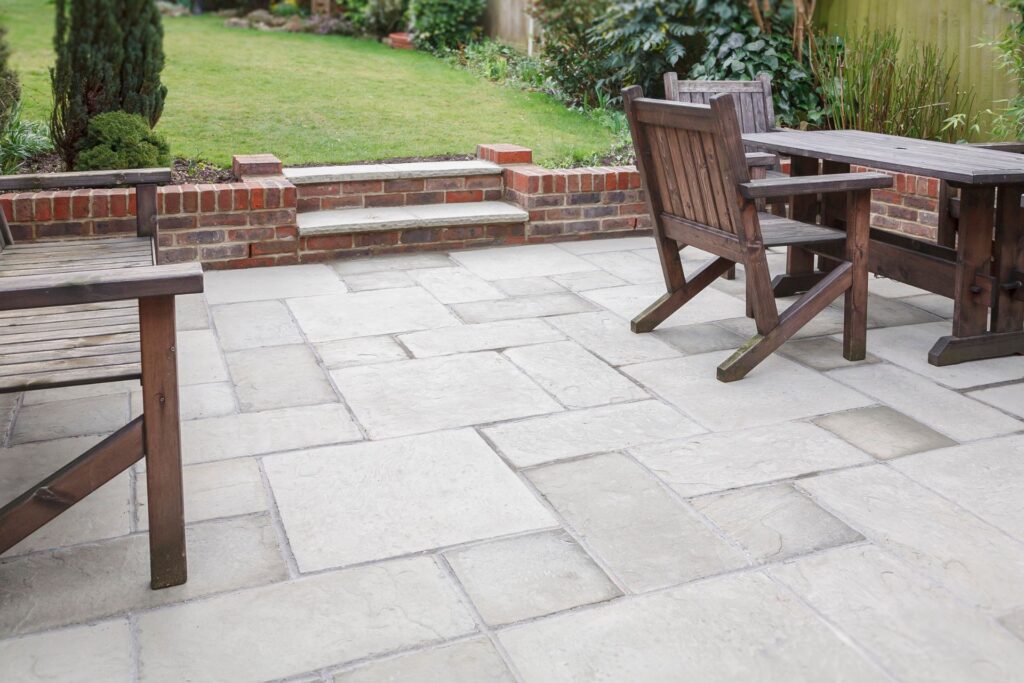
Case Studies And Examples
Real-Life Examples: Transforming Concrete Patios
In the journey of home improvement, few projects offer as much versatility and potential for personalization as painting or sealing a concrete patio. To illustrate the profound impact these options can have, let’s delve into some real-life examples of homeowners who have undertaken these projects. By sharing their experiences and showcasing their outcomes, you can gain valuable insights and inspiration for your own patio transformation.
Example 1: The Vibrant Patio Paint Makeover
Homeowners: John and Lisa
Location: Wellington, New Zealand
Project Overview: John and Lisa wanted to breathe new life into their aging concrete patio, which had become an eyesore. They decided to paint their patio using vibrant, weather-resistant concrete paint.
Experience and Process
Preparation: John and Lisa began by thoroughly cleaning the patio surface, and removing any dirt, debris, and stains. They used a power washer for deep cleaning and allowed the surface to dry completely.
Painting: They chose a bold blue color to complement their garden and outdoor furniture. Using high-quality concrete paint, they applied two coats with a roller, ensuring even coverage. They allowed sufficient drying time between coats to ensure durability.
Outcome: The transformation was astounding. The once-dull patio now had a fresh, vibrant look that instantly uplifted the entire outdoor space. John and Lisa were thrilled with how the paint added personality and charm to their patio, making it a perfect spot for outdoor gatherings and relaxation.
Before-and-After Photos
Before: The patio appeared cracked, stained, and lifeless.
After: The patio showcased a smooth, colorful surface that looked brand new.
Example 2: The Subtle Elegance of Sealing
Homeowners: Emma and David
Location: Auckland, New Zealand
Project Overview: Emma and David preferred a more natural look for their concrete patio. They opted to seal the patio to enhance its appearance while maintaining the concrete’s inherent character.
Experience and Process
Preparation: Emma and David cleaned the patio thoroughly, similar to John and Lisa’s process, to ensure the sealer would adhere properly.
Sealing: They selected a clear, high-gloss concrete sealer to bring out the natural texture and color of the concrete. Using a sprayer, they applied the sealer in thin, even coats, allowing each coat to dry before applying the next.
Outcome: The result was a subtle yet stunning transformation. The sealer added a glossy finish that highlighted the natural beauty of the concrete while providing protection against the elements. Emma and David appreciated how the sealer preserved the patio’s original look but with an added touch of elegance and durability.
Before-and-After Photos
Before: The patio had a weathered, unfinished appearance.
After: The patio had a polished, glossy surface that enhanced its natural appeal.
These case studies highlight the diverse possibilities available when choosing to paint or seal a concrete patio. Whether you desire a bold, colorful transformation or a subtle, elegant enhancement, the right choice depends on your aesthetic preferences and functional needs. By examining the experiences of others, you can make an informed decision that will turn your patio into a beautiful and inviting outdoor space.
By incorporating these real-life examples and before-and-after photos, you can clearly see the potential impact of painting or sealing your concrete patio. These stories not only provide practical insights but also inspire confidence in undertaking your own patio project, ensuring you achieve the best possible outcome.

FAQs: About Should I Paint or Seal My Concrete Patio
What are the main differences between painting and sealing a concrete patio?
Painting involves applying a colored coating on the surface of the concrete, offering aesthetic enhancement and protection. Sealing, on the other hand, involves applying a clear or tinted sealant that preserves the natural look of concrete while providing protection against stains and weathering.
How does painting affect the appearance of my concrete patio?
Painting allows you to choose from a variety of colors, transforming the look of your patio to suit your preferences. It can cover imperfections and give a uniform appearance.
What are the advantages of sealing my concrete patio?
Sealing enhances the durability of the concrete by protecting it from stains, moisture penetration, and freeze-thaw damage. It also maintains the natural look of the concrete, making it ideal for those who prefer the original appearance.
Will painting or sealing my concrete patio affect maintenance requirements?
Yes, both options affect maintenance. Painted patios may require periodic touch-ups or repainting to maintain appearance and protection. Sealed patios generally require less maintenance, with reapplication of sealer needed every few years depending on the type of sealer used.
How does climate affect the choice between painting and sealing?
Climate plays a significant role in durability and maintenance. In harsher climates with frequent freeze-thaw cycles or intense sunlight, sealing may offer better protection against weathering compared to painting.
Can I change the color of a painted concrete patio in the future?
Yes, but it typically requires stripping the existing paint and applying a new coat with the desired color. This process can be labor-intensive and may involve additional costs.
Which option is more cost-effective in the long run?
Sealing is generally considered more cost-effective in the long run because it requires less frequent maintenance compared to painting. However, initial costs for quality sealers may be higher than paint.
How do I prepare my concrete patio for painting or sealing?
Preparation typically involves cleaning the surface thoroughly to remove dirt, stains, and any existing coatings. Repairing cracks and ensuring the surface is dry are also crucial steps before applying paint or sealer.
Can I DIY paint or seal my concrete patio, or should I hire a professional?
DIY is possible for both painting and sealing, but professional application ensures proper preparation and application techniques, which can affect the longevity and appearance of the finish.
What factors should I consider when deciding between painting and sealing my concrete patio?
Consider factors such as desired appearance, maintenance commitment, climate, budget, and long-term durability when choosing between painting and sealing your concrete patio.
Conclusion
In conclusion, when choosing between painting and sealing a concrete patio, it’s essential to consider the unique advantages and disadvantages of each option. Painting offers a wide range of color choices and the ability to create decorative designs, making it ideal for those seeking a customized look. However, it may require more frequent maintenance. Sealing, on the other hand, enhances the natural appearance of the concrete, providing protection against moisture and stains with less upkeep. For homeowners prioritizing longevity and minimal maintenance, sealing is often the preferred choice. Ultimately, the best decision depends on your specific needs, aesthetic preferences, and how you intend to use the patio. Before committing, it’s wise to evaluate your situation and consult with a professional to ensure the chosen method aligns with your expectations and lifestyle.
About the Author:
Mike Veail is a recognized digital marketing expert with over 6 years of experience in helping tradespeople and small businesses thrive online. A former quantity surveyor, Mike combines deep industry knowledge with hands-on expertise in SEO and Google Ads. His marketing strategies are tailored to the specific needs of the trades sector, helping businesses increase visibility and generate more leads through proven, ethical methods.
Mike has successfully partnered with numerous companies, establishing a track record of delivering measurable results. His work has been featured across various platforms that showcase his expertise in lead generation and online marketing for the trades sector.
Learn more about Mike's experience and services at https://theleadguy.online or follow him on social media:
